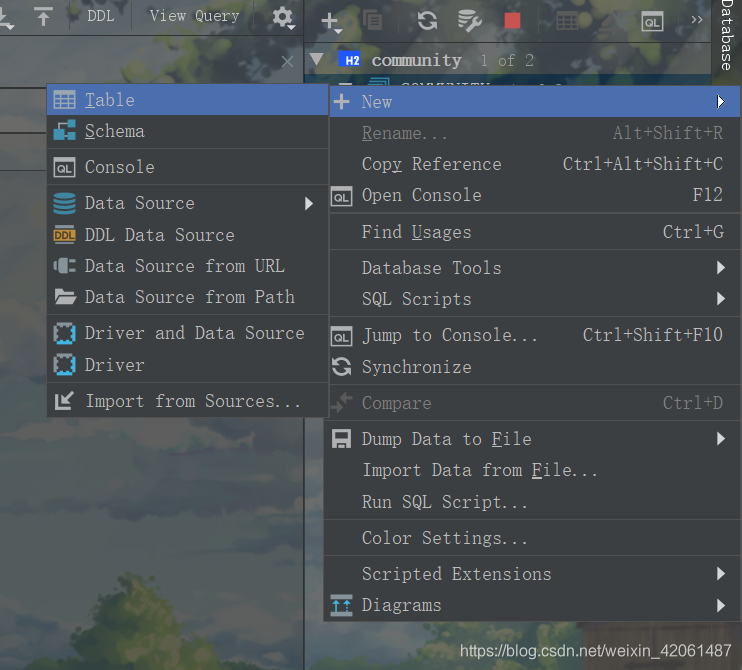暑期第一战:
此次学习用到的技术:
- Spring boot
- Spring Mvc
- MyBatis
- MySQL,H2
- Flyway
- Heroku
- Git/Github
- Maven
- Result
- 2.查看spring官方文档,按照文档编写第一个简单的文件
1)添加spring的maven依赖
2)新建一个controller类,添加@controller注解,编写html代码(写再resources的template里面
正常的resources里面的内容是:
template:html,模板文件
static:image文件,css,js
appilcation.properties:日志配置文件(在里面直接可以改端口号,如:server.port=8887
资料:
https://spring.io/guides/gs/serving-web-content/ (Spring Web)
https://spring.io/guides (Spring 文档)
https://elasticsearch.cn/explore (es)
前端框架:https://v3.bootcss.com/ (Bootstrap)
https://developer.github.com/apps/building-oauth-apps/creating-an-oauth-app/ (Github OAuth)
3.编写前端页面以及controller
在templates里面写好首页的html,导入相应的css,js
以及对应的controller类
一,实现Github登录操作
参考github文档
前端模板
具体流程:
1.登录github注册OAuth Apps点击注册:(注册完成之后到代码编辑部分)
注册完成之后会生成一个id号和密码
2.前端登录按钮设置
点击登录之后访问
https://github.com/login/oauth/authorize
+?client_id=“github生成的id号”
+&redirect_uri=http://localhost:8080/callback&scope=user&state=1
3.后端controller代码(回调函数)
@Autowired
private GithubProvider githubProvider;
@Value("${github.client.id}")
private String clientId;
@Value("${github.client.secret}")
private String clientSecret;
@Value("${github.redirect.uri}")
private String redirectUrl;
@GetMapping("/callback")
public String callback(@RequestParam(name="code") String code,
@RequestParam(name="state") String state,
HttpServletRequest request
){
AccessTokenDTO accessTokenDTO = new AccessTokenDTO();
accessTokenDTO.setClient_id(clientId);
accessTokenDTO.setClient_secret(clientSecret);
accessTokenDTO.setCode(code);
accessTokenDTO.setRedirect_url(redirectUrl);
accessTokenDTO.setState(state);
String accessToken = githubProvider.getAccessToken(accessTokenDTO);
GithubUser user = githubProvider.getUser(accessToken);
if(user!=null){
//登录成功,写cookie和session
request.getSession().setAttribute("user",user);
return "redirect:/";
}else {
//登录失败,重新登录
return "redirect:/";
}
}
@Value("${github.client.id}")里面的地址是直接在properties文件里面配置,然后持久化可以调用的
获取accessToken的函数:
public String getAccessToken(AccessTokenDTO accessTokenDTO){
MediaType mediaType = MediaType.get("application/json; charset=utf-8");
OkHttpClient client = new OkHttpClient();
RequestBody body = RequestBody.create(mediaType,JSON.toJSONString(accessTokenDTO));
Request request = new Request.Builder()
.url("https://github.com/login/oauth/access_token")
.post(body)
.build();
try (Response response = client.newCall(request).execute()) {
String string = response.body().string();
System.out.println(string);
String token = string.split("&")[0].split("=")[1];
return token;
} catch (IOException e) {
e.printStackTrace();
}
return null;
}
获取GithubUser对象函数:
public GithubUser getUser(String accessToken){
OkHttpClient client = new OkHttpClient();
System.out.println("accessToken"+accessToken);
Request request = new Request.Builder()
.url("https://api.github.com/user?access_token="+accessToken)
.build();
try {
Response response = client.newCall(request).execute();
String string = response.body().string();
GithubUser githubUser = JSON.parseObject(string,GithubUser.class);
return githubUser;
} catch (IOException e) {
e.printStackTrace();
}
return null;
}
二.应用Mysql来创建数据库idea内嵌结合Mybatis
1.导入pom.xml文件h2的文件
<dependency>
<groupId>mysql</groupId>
<artifactId>mysql-connector-java</artifactId>
<version>5.1.15</version>
<scope>runtime</scope>
</dependency>
2.创建一个mysql的数据库,并新建一个表,往里面添加数据
三,使用注解的方式来编写数据库操作(CRUD)
1.新建一个pojo类(User)
可以让数据库操作来调用,插入,查询都可以
import lombok.Data;
/**
* @Author: CB#
* @Date: 2019/7/18
* @Description: com.gudf.community.model
* @version: 1.0
*/
@Data
public class User {
private Integer id;
private String name;
private String account_id;
private String token;
private Long gmt_create;
private Long gmt_modified;
private String avatarUrl;
}
2.编写User数据库操作的接口类(定义数据库语句
package com.gudf.community.mapper;
import com.gudf.community.model.User;
import org.apache.ibatis.annotations.Insert;
import org.apache.ibatis.annotations.Mapper;
import org.apache.ibatis.annotations.Param;
import org.apache.ibatis.annotations.Select;
import org.springframework.stereotype.Component;
/**
* @Author: CB#
* @Date: 2019/7/18
* @Description: com.gudf.community.mapper
* @version: 1.0
*/
@Mapper
@Component
public interface UserMapper {
@Insert("insert into user(name,account_id,token,gmt_create,gmt_modified,avatar_url) values (#{name}, #{account_id},#{token},#{gmt_create},#{gmt_modified},#{avatarUrl})")
void insert(User user);
@Select("select * from user where token = #{token}")
User findByToken(@Param("token") String token);
@Select("select * from user where id = #{id}")
User findById(@Param("id")Integer id);
}
这样就可以直接在Controller调用这个接口的方法,传入参数来使用数据库了
类如这一块:当登录成功的时候,往数据库里面插入相应的数据,并跳转回首页
if(githubUser!=null&&githubUser.getId()!=null){
User user = new User();
String token = UUID.randomUUID().toString();
user.setToken(token);
user.setName(githubUser.getName());
user.setAccount_id(String.valueOf(githubUser.getId()));
user.setGmt_create(System.currentTimeMillis());
user.setGmt_modified(user.getGmt_modified());
user.setAvatarUrl(githubUser.getAvatar_url());
userMapper.insert(user);
response.addCookie(new Cookie("token",token));
//登录成功,写cookie和session
// request.getSession().setAttribute("user",githubUser);
return "redirect:/";
}
注:如果你的pojo类里面使用的是驼峰式命名的话,你可以在application.properties里面配置这个:(使类里面的下划线变成首字母大写的)
mybatis.configuration.map-underscore-to-camel-case=true
将循环的变量存入Model里面
List<QuestionDTO> questionList = questionService.list();
model.addAttribute("questions",questionList);
return "index";
使用这个语句可以直接取Model里面的值(并遍历)
附录:
@Transactional:开启事务!!(一整个函数里面的)





